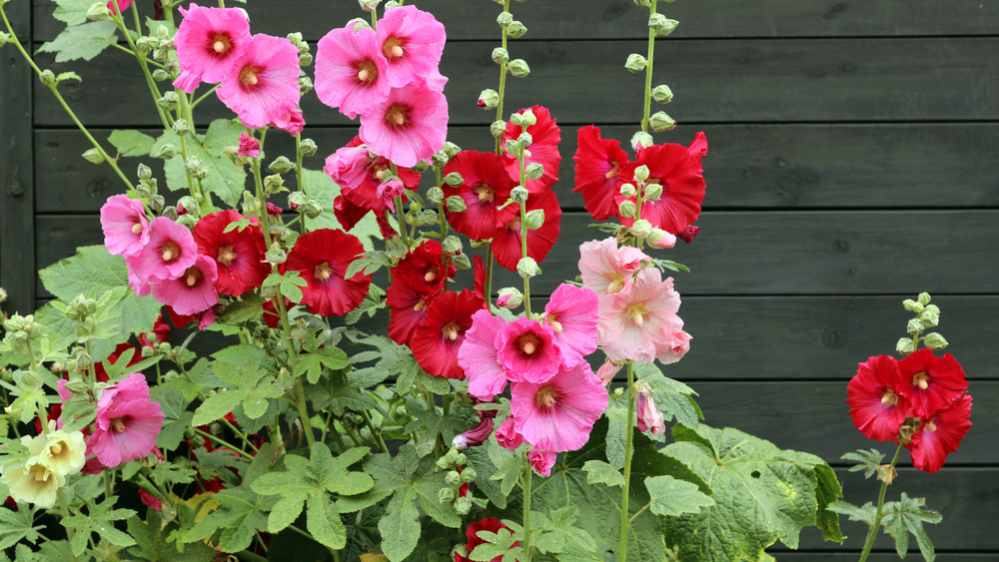Have you spotted the hollyhocks blooming? Old-time favorites in cottage gardens, hollyhocks have large blooms that are all borne up and down a single tall stem! They are long-blooming from June through August. Our Hollyhock Growing Guide provides information on planting, growing, harvesting, and even eating these showstopping flowers.
About Hollyhocks
Most of the old-fashioned types (Alcea rosea) are biennial: They produce foliage in the first year, then flower and self-seed before dying in the second. Once established, the plants perform like perennials, setting seed year after year. Due to their self-seeding properties, they may appear to spread, but, in actuality, they do not spread at all. Some newer varieties are considered perennial—they will bloom the first year and return year after year.
Hollyhocks grow 3 to 8 feet tall on a single stem, with single or double flowers that bloom from the bottom up. Butterflies, bees, and hummingbirds love these colorful blooms. Although hollyhocks originated in Asia, lore suggests their name may have originated during the “holy” religious Crusades (1095–1291), when anti-inflammatory salve from the plants was used to heal horses’ legs, or hocks. In addition to their medicinal properties, hollyhocks are safe for human consumption and are not poisonous to dogs.











